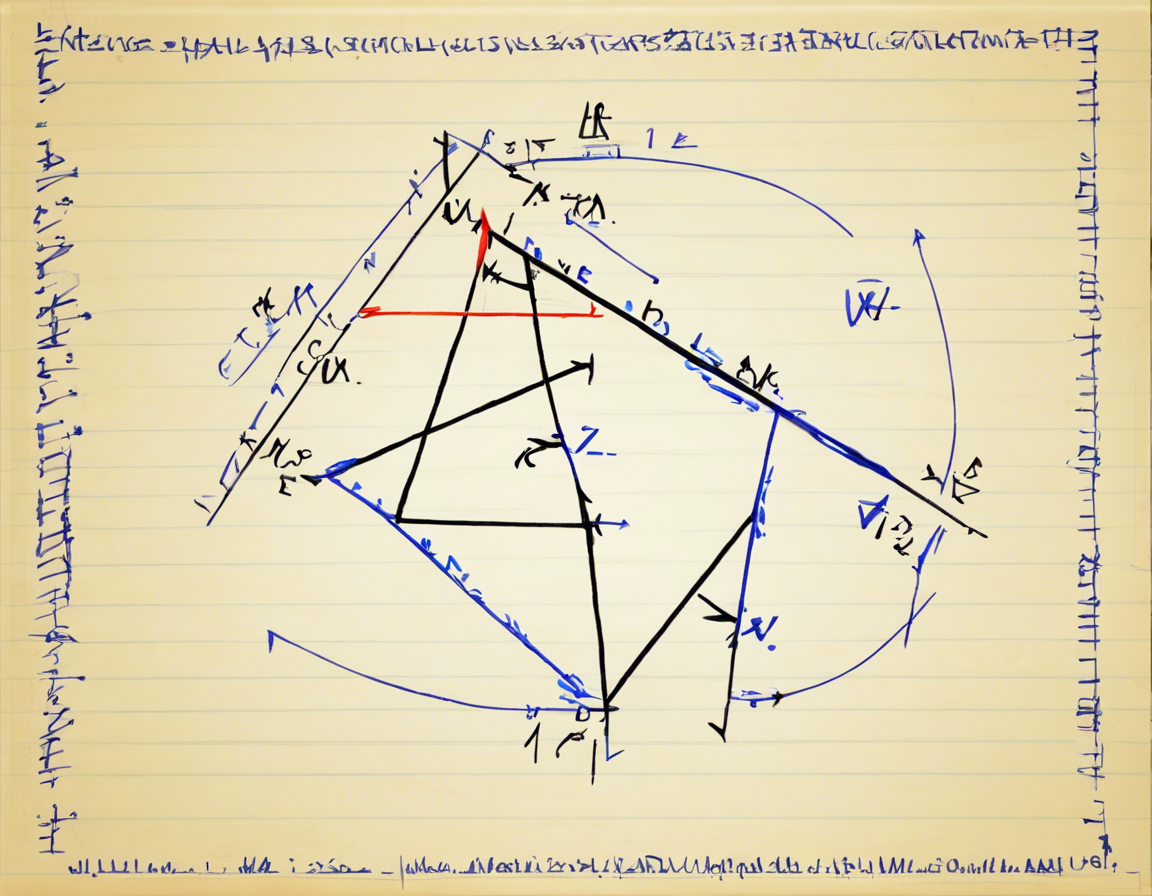In the field of mathematics, various geometric shapes and their properties are thoroughly studied to gain a better understanding of their characteristics and relationships. One significant concept in geometry is the circumcenter of a triangle. The circumcenter is defined as the point where the perpendicular bisectors of a triangle’s sides intersect. This point plays a crucial role in determining the properties of the triangle and can be found using a specific formula.
Understanding the Circumcenter of a Triangle
Before delving into the formula to calculate the circumcenter of a triangle, it is essential to comprehend its significance. The circumcenter is the center of the circumcircle, which is a circle passing through all three vertices of the triangle. This point is equidistant from the triangle’s vertices, making it an essential element in various geometric proofs and constructions.
The circumcenter holds some key properties that make it distinct and valuable in geometry:
-
Equidistant Property: The circumcenter is equidistant from the vertices of the triangle, implying that it forms equal radii to each vertex.
-
Orthocenter Connection: The line segment joining the circumcenter and the orthocenter (the point where the altitudes of the triangle intersect) is of particular interest in triangle geometry.
-
Constructibility: The circumcenter is pivotal in constructing the circumcircle of a triangle, aiding in various geometric constructions and proofs.
Given the importance of the circumcenter, it becomes crucial to be able to calculate its coordinates efficiently using a specific formula.
The Circumcenter Formula
To find the circumcenter of a triangle with vertices at (x1, y1), (x2, y2), and (x3, y3), one can use the following formula:
[ x = \frac{(a^2(x_1) + b^2(x_2) + c^2(x_3))}{2A} ]
[ y = \frac{(a^2(y_1) + b^2(y_2) + c^2(y_3))}{2A} ]
Here, A represents the area of the triangle, which can be calculated using the formula:
[ A = \frac{1}{2} |x_1(y_2 – y_3) + x_2(y_3 – y_1) + x_3(y_1 – y_2)|]
Additionally, the values of a, b, and c in the circumcenter formula correspond to the side lengths of the triangle, as follows:
- a = Distance between points (x2, y2) and (x3, y3)
- b = Distance between points (x1, y1) and (x3, y3)
- c = Distance between points (x1, y1) and (x2, y2)
By applying the above formulae and calculating the necessary parameters, one can determine the coordinates of the circumcenter, thereby identifying the central point of the triangle.
Special Cases and Considerations
While the circumcenter formula provides a systematic approach to finding the central point of a triangle, there are a few special cases and considerations to keep in mind:
-
Equilateral Triangle: In the case of an equilateral triangle, where all three sides are of equal length, the circumcenter coincides with the centroid (the point of concurrency of the medians) and the orthocenter.
-
Degenerate Triangle: For a degenerate triangle, where the three vertices are collinear, the circumcenter formula may not yield meaningful results as the triangle does not have a unique circumcenter.
-
Coordinates Verification: It is advisable to verify the calculated circumcenter coordinates by constructing the circumcircle and ensuring that it passes through all three vertices of the triangle.
FAQs (Frequently Asked Questions)
- What is the significance of the circumcenter in triangle geometry?
-
The circumcenter is crucial as it represents the center of the circumcircle passing through all three vertices of the triangle.
-
How does the circumcenter formula differ from the centroid formula?
-
While the circumcenter formula calculates the central point based on perpendicular bisectors, the centroid formula determines the point of intersection of the medians.
-
Can the circumcenter be located outside the triangle?
-
Yes, depending on the triangle’s properties, the circumcenter may lie outside the triangle, especially in obtuse-angled triangles.
-
Are there alternative methods to find the circumcenter besides the formula?
-
Yes, geometric constructions using a compass and straightedge can also determine the circumcenter of a triangle.
-
Is the circumcenter formula applicable to all types of triangles?
- Yes, the circumcenter formula can be applied to all types of triangles, regardless of their angle measures or side lengths.
In conclusion, understanding the concept of the circumcenter and its formula for calculation provides valuable insights into the geometry of triangles. By mastering this concept, mathematicians and geometry enthusiasts can explore the intricate relationships between a triangle’s vertices and its central point, enhancing their knowledge and problem-solving skills in geometric contexts.
